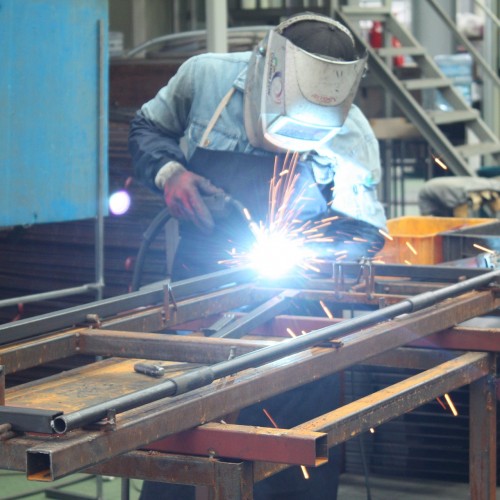
Posted on October-10-2019
Within the welding industry, there are various arc welding processes you can use. The two main processes, and arguably the most well known, are MIG welding and TIG welding. Choosing the right welding process is vital to the success of your project. Using the wrong type of welding technique can result in numerous problems, such as weaker bonds, corrosion of the weld joint or a complete failure in the binding of the weld in the first place.
Both MIG and TIG arc welding techniques have their similarities, as we will explore through this blog piece. However, depending on your particular project, there may be times where one of these arc welding processes is more useful than the other.
Metal Inert Gas (MIG) welding, also referred to as Gas Metal Arc Welding (GMAW), is a process that involves a wire being constantly fed through a welding gun at a steady pace. When the wire leaves the welding gun, it comes into contact with an electric tip. The meeting between the two causes the feed wire to melt and creates the desired weld. The continuously-fed through wire acts as a filler material which helps join the two metal objects.
MIG welding is often referred to as the “hot glue gun” of welding processes due to its ease of use, and the speed in which you can fuse two materials together. This is because the feed wire in MIG welding acts as an electrode and filler which means thicker pieces can easily be fused together, without the need to heat them all the way through.
Tungsten Inert Gas (TIG) welding, also known as Gas Tungsten Arc Welding (GTAW), is the process of using long rods which fuse two metals directly together. To carry out a TIG weld it requires three main components: heat, shielding and filler metal. Heat is produced by electricity passing through the tungsten electrode which creates an arc to the metal. The shielding comes from a compressed bottle of gas. When this gas is turned on it protects the weld area from the air. This is a two-handed job, which requires a very precise process. With the other hand, a welder starts the fill the joint by manually dipping the welding wire into the arc and filling it in order to create a single piece of metal.
TIG welding is a process which requires a constant current power source and uses a non-consumable tungsten electrode to run a current through both metals and join them. It is a clean, versatile process and requires the most skill for a welder.
While MIG welding and TIG welding are both processes that create a weld using an electric arc, the techniques used to achieve that arc are quite different. MIG welding uses a continuous wire feed to create a spark and form the weld. Whereas, TIG welding uses non-consumable tungsten welding rods to generate extreme heat which then melts the metal and creates a weld.
MIG and TIG welding can be used on a wide range of metals, however, TIG is limited in its effectiveness on thicker tasks, compared to MIG welding which can fuse together larger pieces of metal. Another difference between the two is that TIG uses a separate filler metal to create the weld, whereas MIG does not.
Arc Welding Services specialises in selling, repairing, and the hire of welding equipment. You can get in touch by giving us a call on 0121 327 2249, or by filling out one of our online contact forms.